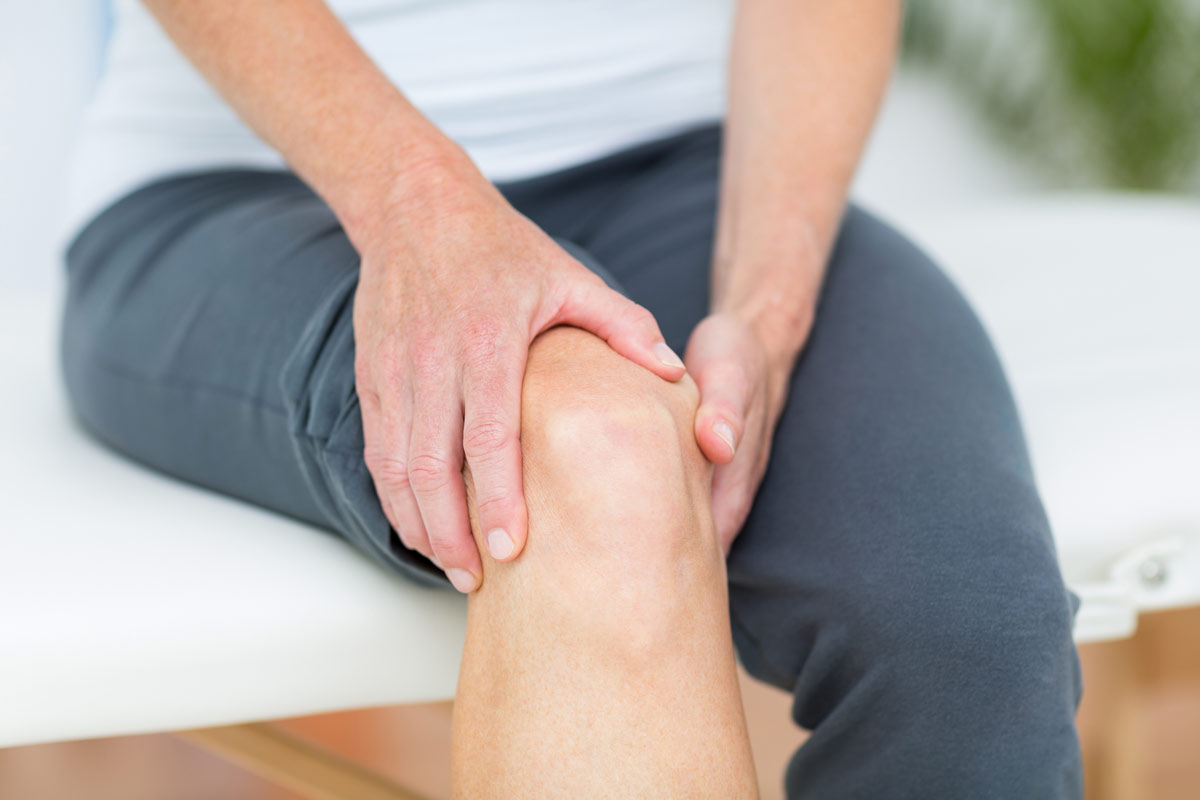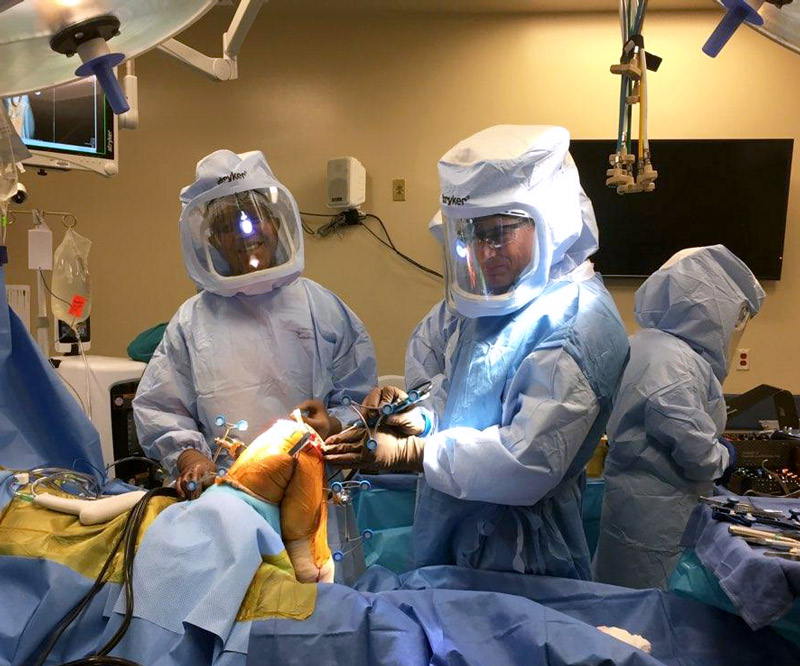
Breaking Down the Basics of Joint Replacement Surgery
The knee bone's connected to the shin bone, but what happens when those bones no longer line up correctly?
Joint replacement surgery is a common and highly effective means of correcting a deformity, restoring mobility and eliminating joint pain.
“In 2011, almost 1 million total joint replacements were performed in the United States,” says Dr. Joseph Varcadipane, an orthopedic surgeon at Straub Medical Center who specializes in hip and knee replacement and general orthopedic trauma.
“Hip and knee replacements are the most commonly performed joint replacements, but replacement surgery can be performed on other joints as well, including the ankle, wrist, shoulder and elbow,” Varcadipane states.
Here, Varcadipane breaks down the basics of this common form of surgery and offers advice for keeping your joints in good shape for years to come.
Why would a person need joint replacement surgery?
There are several conditions that can cause joint pain and disability that can lead a person to consider joint replacement surgery.
Usually, the pain is caused by damage to the cartilage that lines the ends of the bones, and this damage is usually the result of arthritis (wear and tear), a broken bone or possibly other conditions.
If nonsurgical treatments like medications, physical therapy and changes to everyday activities do not relieve pain and dysfunction, joint replacement surgery may be an option.
How can you tell if someone needs a joint replaced?
Generally, there are a number of considerations.
The first is usually that the joint has an advanced stage of degeneration present, meaning the cartilage is usually completely worn away and the patient has “bone-on-bone” changes – the bones on both sides of the joint are rubbing on one another with nothing in between.
The second criteria is that the patient has tried to manage this problem non-operatively for some time, meaning they have tried some or all of the options mentioned above to control their pain.
Lastly, the third reason for joint replacement is that the pain and dysfunction that this problem is causing is severely affecting the life and activity level of the patient and, overall, is very negatively affecting the patient’s quality of life.
Are there different types of joint replacement surgery?
Almost all major joints in the body can be replaced. Hip and knee replacements are the most commonly performed joint replacements, but replacement surgery can be performed on other joints as well, including the ankle, wrist, shoulder and elbow.
Is joint replacement common here in Hawaii?
In Hawaii, the general numbers are proportional to the national averages, although racial and ethnic differences from the mainland population account for some variation in the reasons why patients undergo joint replacement. For example, hip dysplasia, which is a condition that often leads to hip replacement later in life, is relatively more common in people of Japanese descent.
Since Hawaii is home to a higher percentage of people of Japanese descent than on the mainland, more hip replacement is done for hip arthritis as a result of hip dysplasia than on the mainland.
What are the benefits of joint replacement surgery?
The main benefits are the likely elimination of pain and the improvement of function that comes from a joint replacement. In the hip especially, patients can expect little to no pain after the operation, and the improved function can be quite dramatic, especially with newer, less-invasive methods for performing the operation such as “direct anterior” or “anterior approach” hip replacement.
However, all of this depends, of course, upon the successful performance of the operation, and that is one of the reasons it is very important to have the surgery performed by an experienced joint replacement specialist.
What preventive measures can someone take now to keep their joints healthy?
There are many measures people can take to keep their joints healthy – the first is to keep them moving! Motion of the joints promotes a healthy biology inside the joints so the cartilage stays healthier.
In addition, the muscles surrounding the joints should stay strong and flexible to protect the joint and the cartilage by decreasing the overall forces seen by the cartilage.
Keeping body weight at an ideal level is also very important. These days, many people are walking around overweight or obese, and since the forces at the level of the cartilage are actually magnified by activities such as walking, running and going up and down stairs, excess weight means there is excess wear and tear of the joints with each and every step. Eliminating excessive weight can greatly reduce the pain and dysfunction of arthritis as well as potentially delay the onset of it.
Lastly, eating a well-rounded diet consisting of natural, non-processed foods such as vegetables, fruits, fresh meats, fish and complex carbohydrates can supply the body with what it needs to keep the joints healthy as well as keep the weight down and at a more ideal level.
Anything else you’d like to add?
If you or a loved one are having joint pain – especially if you’ve tried medications, therapy and other methods of treating it and it is still quite bothersome – please feel free to contact us at the Straub Bone & Joint Clinic to have it evaluated.
Even if surgery is not necessarily an option, there may be therapies available that you haven’t explored, and we are always happy to try and help.
Published on: April 26, 2016




